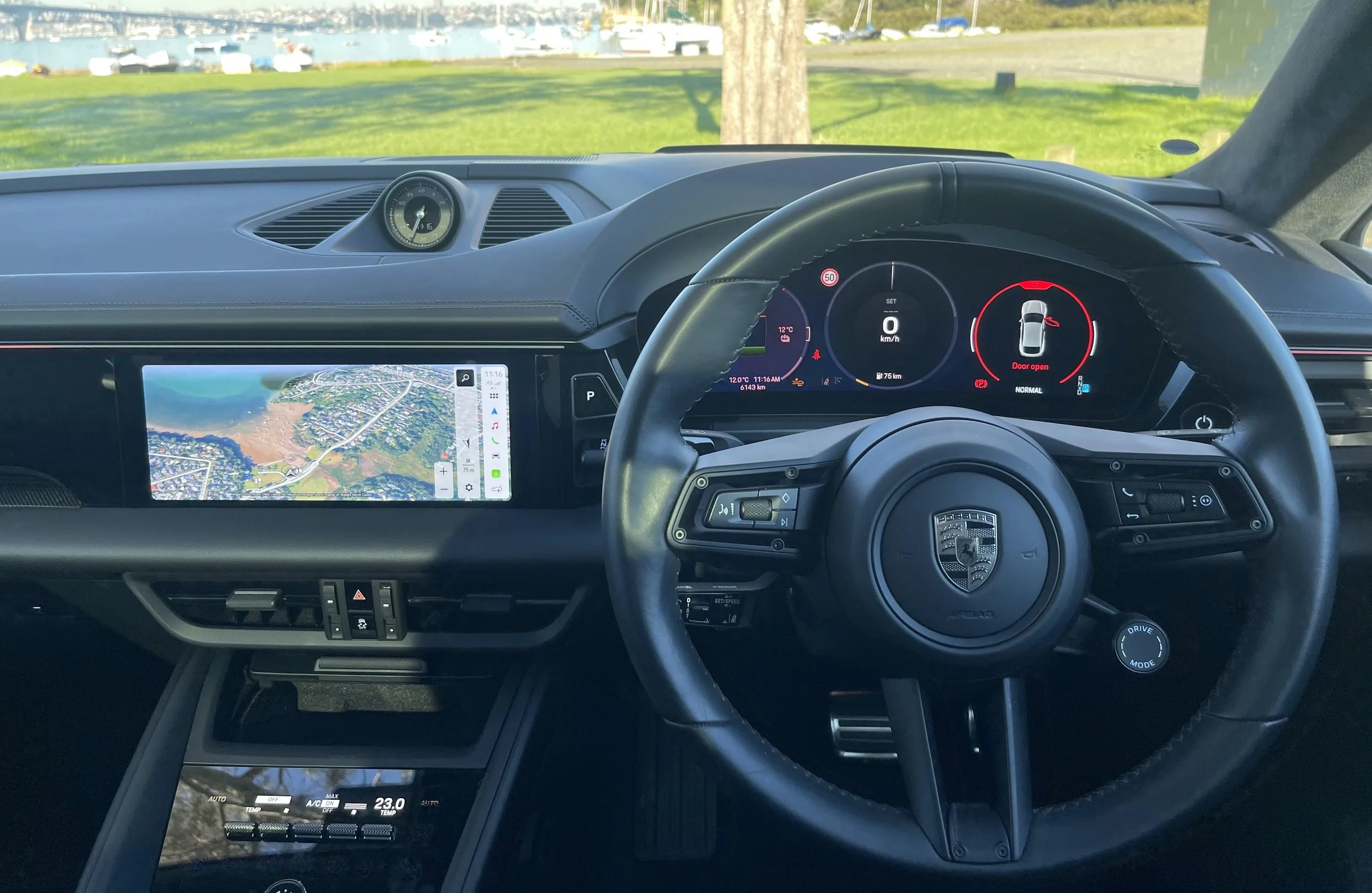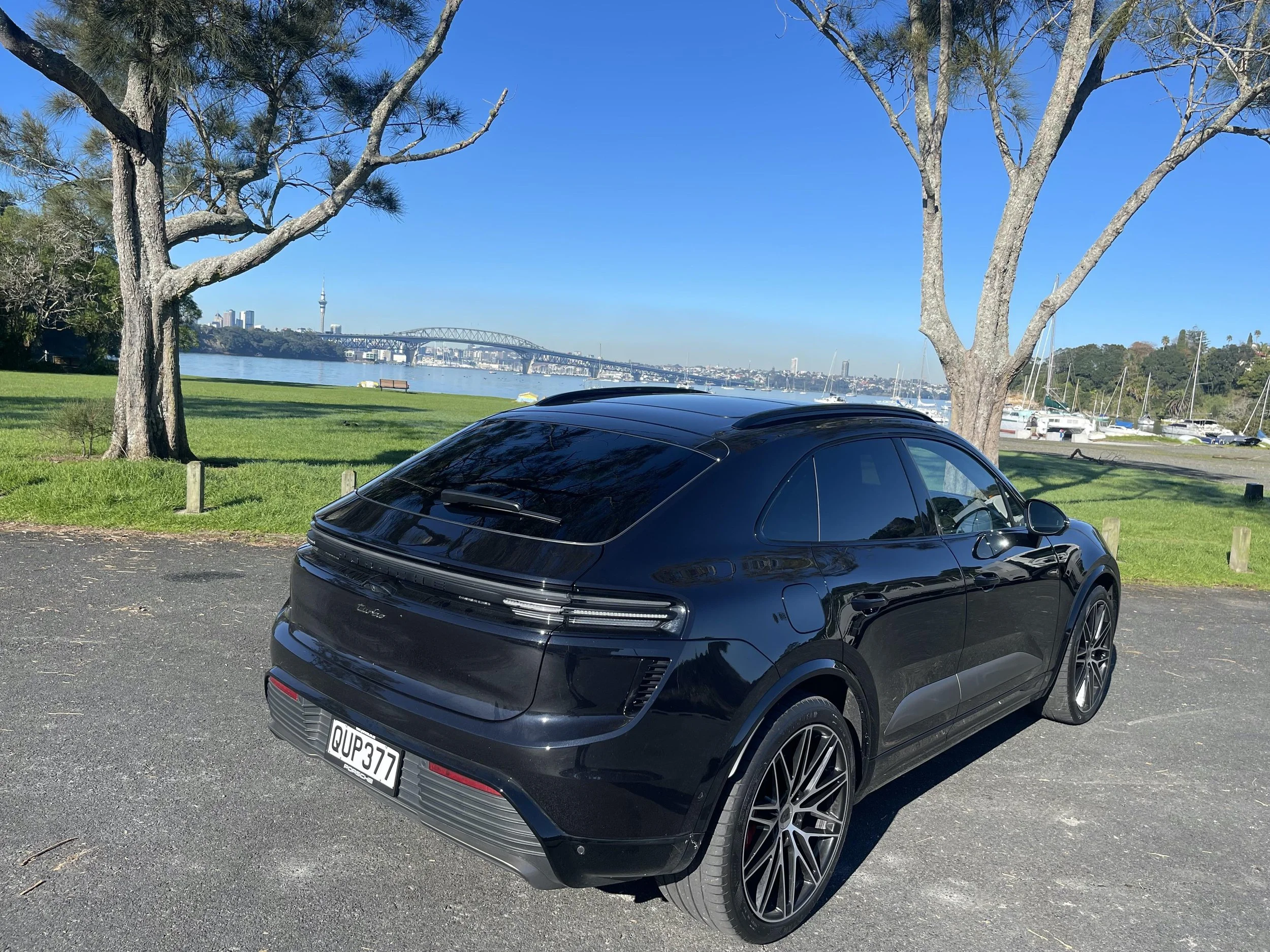Reviewed: Porsche Macan electric SUV
My 2025 Porsche Macan Turbo test vehicle topped out at $235,500. Photos: Liz Dobson
Porsche’s gamble of producing the Macan compact SUV in 2014 has paid off with one million produced as of mid-2025, and the success story is reflected in New Zealand.
The German luxury car brand wanted to use Porsche driving DNA (sharp steering, rear-biased handling feel and a sporty chassis focus) with the Macan while making it a “sports car for everyday life” — room for family and luggage but with dynamics closer to a coupe than a typical SUV.
It made sense with the second-generation 2025 Macan that Porsche kept to its original ethos with an SUV but add electric technology to the product to broaden its appeal.
For 2025, Porsche sells both the updated internal combustion Macan models and the new battery-electric version in many markets — including New Zealand.
The new Macan has a curved digital instrument cluster and layered screen.
The petrol models start from $137,770 whereas my electric Macan Turbo test vehicle topped out at $235,500.
The 2025 Macan’s exterior follows Porsche’s recent family styling language — a wider, lower stance than the earlier Macan thanks to a longer wheelbase and broader track, a slim full-width LED light strip across the rear, and a cleaner, more aerodynamic nose that visually connects it to the Taycan and Panamera.
Compared with the first generation, the 2025 Macan EV looks more “mature” with fewer creases, more purposeful surfacing and a focus on aerodynamic efficiency rather than muscularity. Inside, the new Macan borrows the curved digital instrument cluster and layered screen architecture introduced on recent Porsche models — multiple screens (a driver display, a main infotainment and often a passenger display option) and an Android Automotive or Porsche-specific infotainment layer.
Cabin packaging improves slightly versus the original Macan thanks to the larger footprint, and the driving environment remains focused on the driver with familiar toggles and a low seating position.
The 2025 Macan has a slim full-width LED light strip across the rear.
Driving the electric Macan is where Porsche’s engineering effort is most obvious. The EV Macan is heavier than the original petrol model (due to battery and motors), but the low centre of gravity and carefully tuned air suspension, active dampingl turns in with precision and resists the floating feel that plagues many heavy EV SUVs.
My test Macan had the impressive performance figures of 430KW of power and up to 1130 Nm of torque in launch mode (which is all fine for the race track, but don’t try this on the motorway onramp).
The most important factor for electric vehicles is the range, and the Macan’s is an impressive 590km, but as always the battery is impacted by the use of air conditioning and how the driver prefers sports mode over eco.
It has a wider, lower stance than the earlier Macan.
I’m the former as I believe that to stay true to the Porsche DNA you need to use its performance factors. That means overtaking on the motorway, tackling those winding roads at optimum speed and opting for road trips rather than suburban drives.
The EV Macan manages impressive agility for its weight, thanks to a low centre of gravity, tuned chassis and Porsche’s setup. Porsche exceeds at producing vehicles that have superb handling and that’s the premium you’re paying for this luxury vehicle.
It’s competitors in the premium segment in New Zealand include the German three of Audi’s Q6 Etron, BMW’s iX and Mercedes-Benz’s EQE. While Italian brand Maserati has the Grecale and you can add Telsa Model Y facelift’s performance model when it arrives here in 2026.
Petrol fans can still choose the sharpened ICE Macan; EV buyers get a genuinely sporty electric SUV that preserves steering precision and driver engagement even as it adds modern EV performance.
It has performance figures of 430KW of power and up to 1130 Nm of torque in launch mode.





